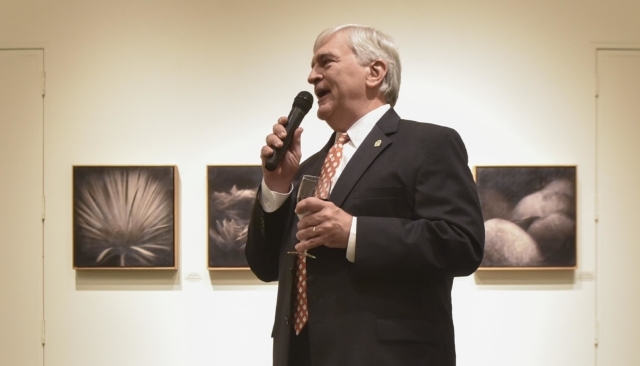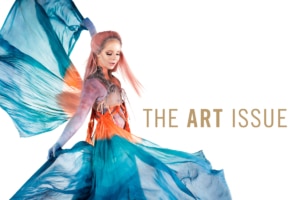What’s art got to do with it?
College students can turn just about anything into an intercollegiate competition. When I was in elementary school, they were stuffing telephone booths. (Don’t know what those are? Ask your grandparents!) That gave way to teams trying to get as many people as they could into a Volkswagen Beetle. Recently, we have seen engineering schools race solar-powered vehicles and Florida-to-Alaska rallies featuring old Mercedes diesels running on used cooking oil collected from Mexican restaurants along the way. Our own professor Ken Frank was instrumental in creating an international intercollegiate mediation competition – which sounds like a classic oxymoron for a discipline that is supposedly the antithesis of competition.
On April 13, in what many thought was a belated April Fool’s joke, I reported to the Brenau Board of Trustees that we are strongly considering establishing a video-gaming team as our next varsity intercollegiate sports initiative. I saw more than a few aging eyebrows arch in either resigned recognition of generational differences or anticipation of the punchline.
Now, as a parent and grandparent, I understand that 18- to 22-year-old people can enthusiastically enjoy sitting in a darkened room participating in video games as “a sport.” What I do not get is that thousands of other 18- to 22-year-olds will sit around and watch them do it. But it is no joke.
Team video-game competitions, or esports, are emerging on campuses throughout the country with every bit as much excitement and support as more traditional sports, including recruiting, dedicated “arena” facilities, scholarships ranging up to 70 percent of tuition to entice players – the whole enchilada. At this time, 63 schools from around the country “field” teams and another nine indicate they will start teams by fall term. The number includes 250-student College of St. Joseph in Rutland, Vermont, as well as behemoths like the University of Texas, USC and NYU.
The National Collegiate Athletic Association’s governors recently started discussions on how to address this fast-growing $36 million a year intercollegiate esports industry. The National Association of Intercollegiate Athletics, with which Brenau is affiliated, already has an esports director in its management hierarchy.
But does this truly serve the Brenau mission? Should a school known for its contributions to music, dance, theater, literature, painting, sculpture and other fine arts now try to attract students for studies in technology that we will have to create? As we watch the deterioration and demise of liberal arts institutions across the country, should we not join the battle and do everything we can to stop it?
Higher education has reached a point at which most prospective students choose to spend their tuition dollars on degrees and clinical training that will buy them jobs. Liberal arts institutions are complicit in that phenomenon. In a market-driven economy, being a not-for-profit institution does not mean that you can survive by continuously operating at a loss, so we must pour our resources and energies into developing programs that our “customers,” prospective students, want to buy.
But there are other aspects of this tale: Higher education universally has not done as good a job as it should to convince 18-year-old freshmen that a degree in English is a great preprofessional degree – for any profession they choose. Nor have we sold the notion that by pushing the boundaries of liberal arts we may help reinvent what art is.
Art changes with every step humanity takes toward the future. The heart of Brenau’s immense Permanent Art Collection comprises pop art and mid-20th century modern works by some of the most radical, unorthodox and experimental artists to ever pick up a paint brush – once very controversial stuff that is now considered mainstream. In this magazine, you will read about a young artist who is working with science professors to create art from live cultures of bacteria. And, with the influx of “gamers” who may come to Brenau as varsity esports participants, who is to say that we do not produce the next Michelangelo creating masterpieces in computer code rather than in rock or plaster?
If you want to accuse me of having an overactive imagination with that comment, go ahead. Imagination is what a university is all about.


